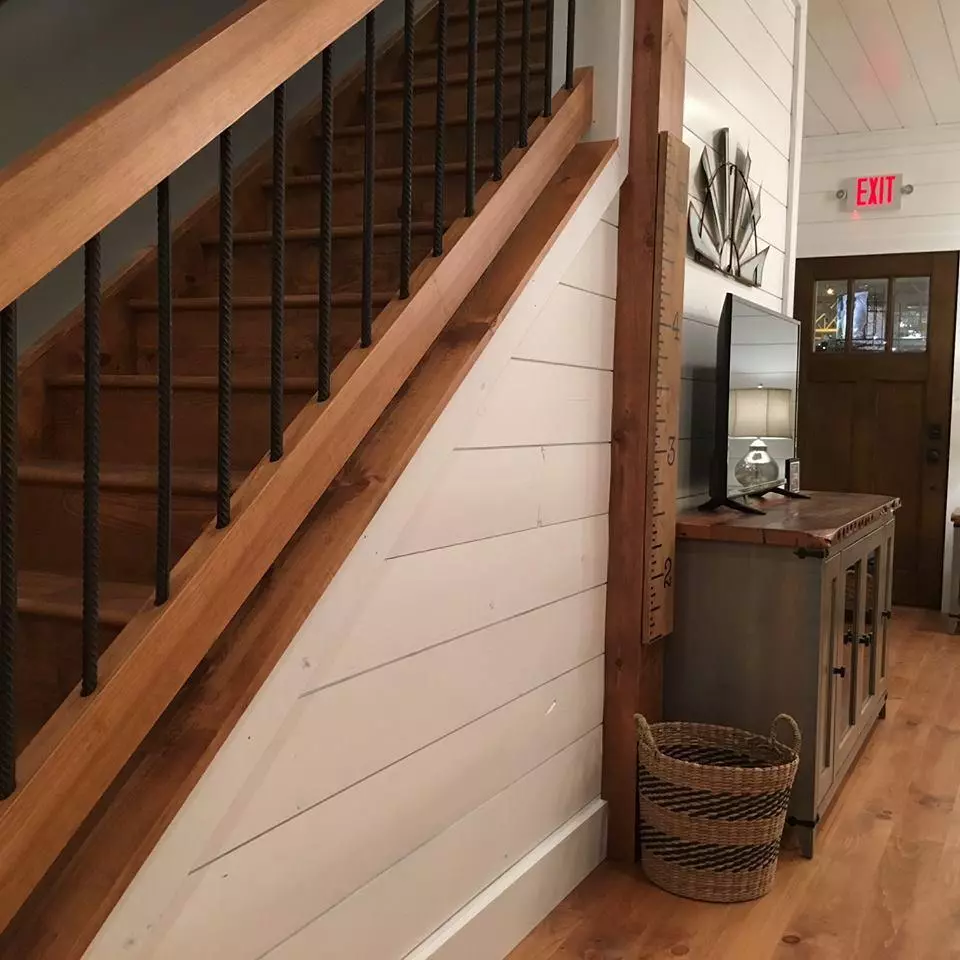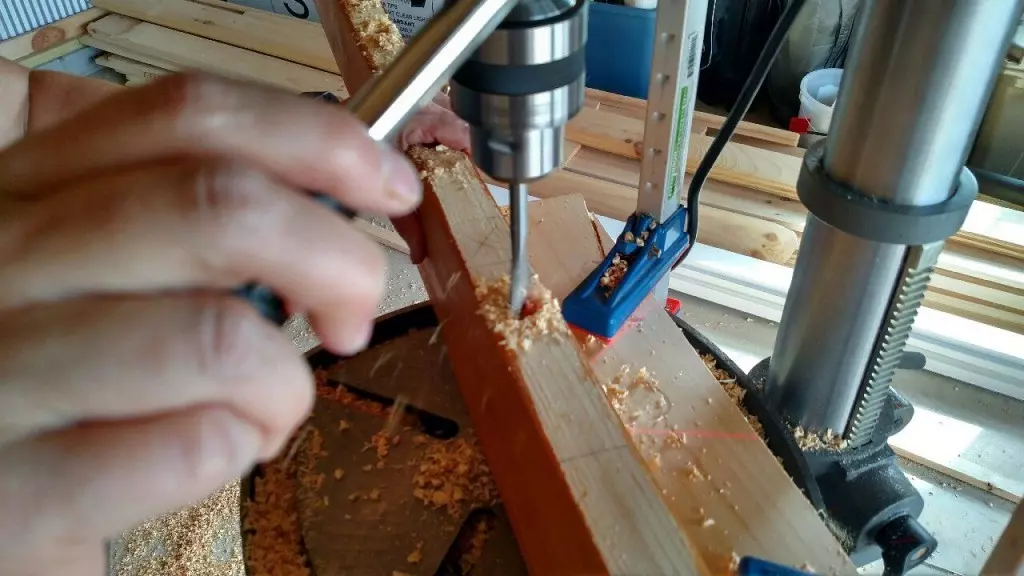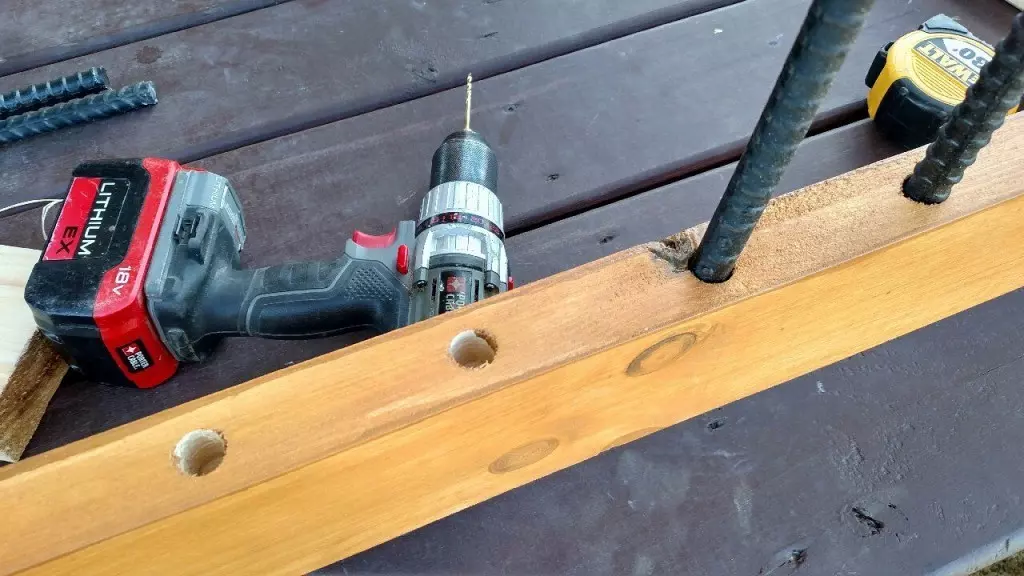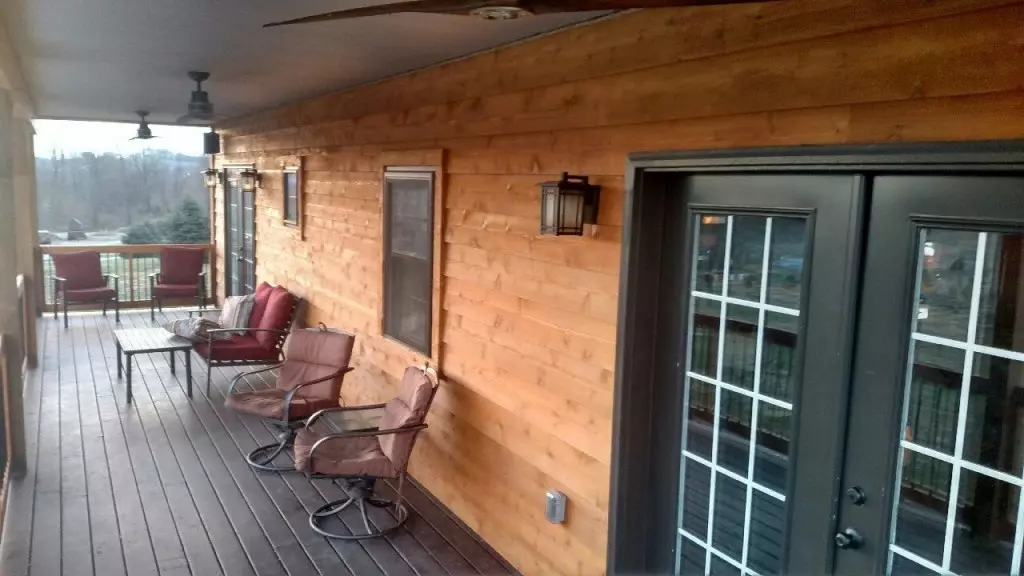Who knew creating homemade porch railings could be so easy? I guess we’ve never been ones to stay traditional. So when it came time to put deck railings on the back porch of the Simple House, we certainly didn’t want to install ordinary wooden balusters.
We have never been big fans of traditional wood spindle porch and deck railings. Not only do they seem to block much of the view, they can be ridiculously expensive, and a long-term maintenance nightmare.
Anyone who has ever had to paint or repaint them knows exactly what I am talking about! As for cost, at anywhere from $2 to $4 and up per spindle, they can get pricey quick. As for the completed rails, the cost can be even more scary.
Faced with a 44′ long x 8′ wide porch, we wanted to come up with a cost-effective solution that fit the look of the house. It also had to be easy to maintain, and keep as much of the view of the farm below as possible.
We briefly considered wire cable railings, but decided the look might be too modern for a farmhouse porch. We just didn’t think the wire would be”beefy” enough to go with the 8 x 8 posts.
And then we began to think about creating our own porch railings using rebar. We first noticed them on the Weaver Barns Urban Farmhouse model they created for a Home and Garden Show last year.
They had built one for the interior staircase of the home. We loved it – and decided to carry the concept outside for our porch.
Creating Homemade Porch Railings
The railings are actually simple to create. We used 2 x 6 pine boards for the upper and lower rails, and drilled holes for the rebar to fit in-between. Not only is the look and feel more open than traditional wooden balusters, it’s way less expensive! Here’s how we built them.
Tools Used: 11/16″ wood spade drill bit, Drill / Driver Screw Gun, Impact Screw Driver
Materials Used : 5/8″ rebar cut to 28″ pieces, 3″ star-bit wood screws, 2 x 6 pine boards
Code in our area requires that railing must be at least 36″ tall. In addition, a 4″ sphere cannot fit between the rails. So we created our rails accordingly.
We started by cutting the 2 x 6 boards to length to fit between the posts. We then made pencil markings at 4″ intervals on the top and bottom rails for the rebar railings. By spacing at 4″ on center, the circumference of the rebar kept the distance between rails at under 4″ to comply with the code.
Next, we drilled holes at each marking 1″ in depth. We used a drill press to make it easier, but it could easily be accomplished with a drill and a piece of tape to make sure the depths are the same. We used a thicker 5/8′ rebar for a beefier look, so we used an 11/16″ hole that the rebar fit snugly down into.
The 28″ rebar fit into the 1″ deep holes drilled into the top and bottom 2 x 6″ rails. The total height once assembled was 36″. We mounted 1.5″ inches off the ground for a total height of 37″.
We found a local supplier who cut our rebar into 28″ lengths at no additional charge. If you are cutting your own, a jig saw with a metal blade will work, but it can be a bit time consuming.
Installation
Installation was actually a breeze. We pre-stained the wood pieces, and spray-painted the rebar with black enamel before assembly to speed the process.
We started by attaching the bottom railing with screws to each 8 x 8″ post. Once the bottom was secured, we inserted a piece of rebar into each of the 11/16 holes along the board. We also screwed in two wood spacer boards at mid points of the rail to soften the metal look. Next, we fit the top railing with the holes facing down on top of the rebar and two wood spacer boards. To complete, we secured the top railing with two more screws toe-nailed into each main post.
All in all, it only took us about 15 minutes to install each section. And we absolutely love the look. To complete the porch, we trimmed out the metal ceiling with 3/4″ stranded rope. The back porch is complete and ready to enjoy – now we just need some warmer weather!
Happy Building! – Jim & Mary. If you would like to receive our DIY, Gardening and Recipe articles each week, you can sign up to follow the blog via email in the right hand column above, “Like” us on Facebook, or follow us on Twitter. This article may contain affiliate links.






